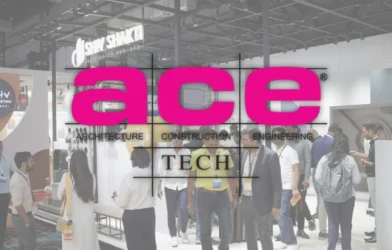On September 21, 2025, the U.S. administration announced a significant policy change affecting the H-1B visa program. A new $100,000 fee will be imposed on all new H-1B visa applications starting from the 2026 lottery cycle. This move has sparked widespread concern, particularly among Indian tech professionals, who constitute over 70% of H-1B visa holders. The new policy represents one of the largest fee hikes in the history of the program, raising questions about its implications on global talent mobility and U.S.-India economic relations.
Clarification on Fee Applicability
The White House has clarified that the $100,000 fee applies exclusively to new H-1B visa applications and does not affect existing visa holders, renewals, or transfers. This clarification aims to alleviate concerns among current visa holders and companies with ongoing projects in the U.S. However, despite this clarification, industry experts warn that the steep fee could significantly alter the strategic planning of Indian IT companies, particularly those that rely heavily on U.S.-based workforces for client delivery.
Impact on Indian Tech Professionals
India’s Ministry of External Affairs has expressed deep concern that the fee increase could disrupt families and have broader humanitarian consequences. Professionals who plan to relocate to the U.S. for work will now face an unprecedented financial hurdle, making overseas assignments less feasible. The fee also raises concerns about long-term career trajectories for Indian talent, as many rely on H-1B visas to gain international experience and strengthen their professional profiles.
Telangana transport minister Ponnam Prabhakar and Congress MP Mallu Ravi have urged the central government to take immediate action. They highlighted the detrimental effects of the fee on aspiring tech workers and emphasized the potential negative impact on the Indian economy, especially states that produce a high number of IT professionals.
Nasscom, India’s IT industry body, welcomed the clarification that the fee applies only to new applications, but expressed concern over its magnitude. Indian IT companies fear that the fee may render on-site U.S. projects financially unviable, potentially forcing firms to reconsider expansion strategies and hiring plans in the U.S.
Reactions from the Indian IT Sector
Following the announcement, shares of major Indian IT companies, including TCS, Infosys, HCLTech, and Wipro, experienced a notable decline. The Nifty IT index dropped 2.7%, reflecting investor apprehensions about the financial impact of the fee on revenue generated from U.S. operations.
Indian IT companies are exploring alternative strategies to mitigate the impact. Many have already invested in upskilling the American workforce, increasing local hiring in the U.S., and exploring remote delivery models. These initiatives aim to reduce dependence on H-1B visas while ensuring continued client service delivery in a cost-effective manner. Over $1 billion has reportedly been invested across multiple companies to prepare for this transition.
Political and Diplomatic Implications
The Indian government has strongly criticized the fee hike, warning that it could have humanitarian consequences by disrupting family reunifications and long-term professional commitments. Officials have argued that the U.S. policy appears to be a reaction to the high proportion of Indian talent in the H-1B program, which accounted for 71% of all visas issued in 2024.
Political leaders from Telangana and other states have emphasized the urgent need for dialogue with U.S. authorities. They have called for a special parliamentary session to discuss possible diplomatic measures and seek avenues to protect the interests of Indian professionals. The situation also underscores the delicate balance in Indo-U.S. relations, as the tech sector represents a key area of economic cooperation between the two countries.
Industry Adaptations and Strategic Outlook
In response to the new fee, Indian IT companies are accelerating strategies to reduce reliance on H-1B visas. This includes expanding remote work models for U.S.-based clients, hiring locally in the U.S., and reskilling talent to meet client demands without necessitating overseas relocation. The long-term goal is to create a more sustainable model that can withstand regulatory and policy changes.
For U.S. authorities, the fee aligns with their broader goal of ensuring that the H-1B program supplements, rather than replaces, the domestic workforce. By imposing a significant fee, the government aims to prevent companies from hiring foreign workers at below-market wages and potentially displacing American workers. This policy shift reinforces the importance of balancing domestic employment protection with the U.S.’s reliance on international talent for maintaining a competitive technology sector.
Challenges Ahead
Despite proactive strategies, Indian IT companies face challenges in adapting to the new fee structure. High-value on-site projects in the U.S. may become financially unviable, leading to slower expansion and potential downsizing of U.S. teams. Talent mobility will also be affected, as fewer professionals may be able to afford the financial burden of relocation under the new rules.
The fee hike could also have ripple effects on the global tech ecosystem. Companies may shift priorities toward remote delivery from India, potentially impacting U.S.-based technology jobs, client relationships, and collaboration models. Additionally, bilateral negotiations between India and the U.S. will play a crucial role in shaping the long-term landscape of H-1B visas and international tech employment.
Conclusion
The introduction of a $100,000 fee for new H-1B visa petitions marks a significant turning point in U.S. immigration policy. While existing visa holders are unaffected, the implications for Indian tech professionals, IT companies, and global talent mobility are substantial. The fee is likely to reshape hiring strategies, remote work adoption, and talent deployment models across the tech industry.
As stakeholders adapt to this new environment, the focus will be on balancing business needs, talent mobility, and diplomatic engagement. The coming months will reveal how Indian IT companies, U.S. policymakers, and international professionals navigate this unprecedented change, ultimately redefining the future of H-1B employment and the global technology workforce.
Disclaimer: This article is based on publicly available information as of September 2025. U.S. government agencies, Indian IT firms, and other stakeholders may issue further updates or clarifications. Some details, including policy interpretations, fee structures, and industry responses, are reported in media and are subject to verification.









